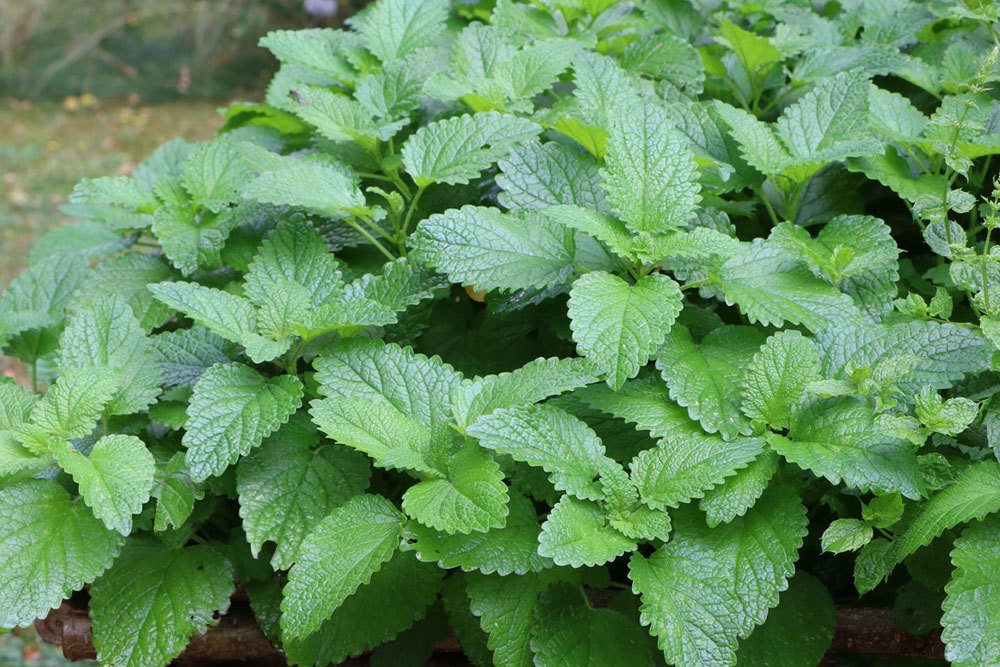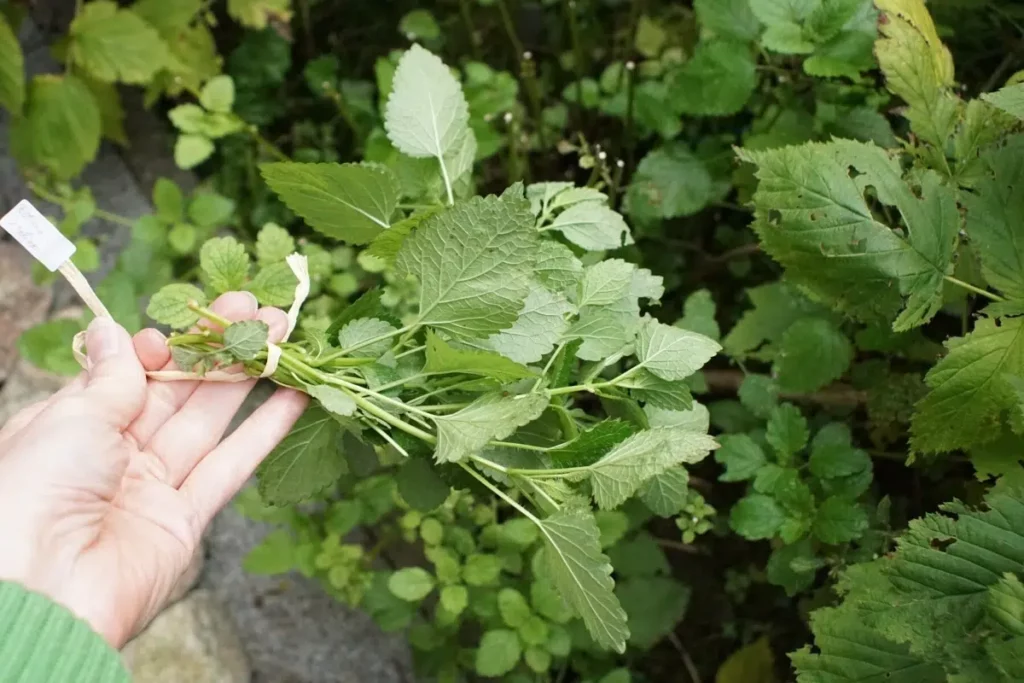Last updated on October 23rd, 2023 at 08:34 pm
The herb with a lemony smell and taste is very popular. It is easy to care for in the garden and enriches the kitchen. What to consider when planting lemon balm, you can learn here.
Contents
- 1 General
- 2 Location
- 3 Soil
- 4 Sowing and planting
- 5 Planting young plants
- 6 Care
- 7 Harvest
- 8 Propagation
- 9 Pests
- 10 Diseases
- 11 Plant neighbors
- 12 Winter protection
- 13 Frequently asked questions
- 14 Which dishes does lemon balm go with?
- 15 How to preserve lemon balm?
- 16 Does lemon balm need to be transplanted at some point?
- 17 Can lemon balm bloom?
- 18 Author
General
Lemon balm (Melissa officinalis) was native to the Mediterranean region, but also runs wild in our country. It is correspondingly hardy and can cope with adverse conditions. The rootstock forms numerous runners, and the seeds are also very prolific. In the garden, the plant belongs to the larger growing herbs. It reaches a height of almost one meter.

Location
The most favorable is a sunny place. Partial shade is also tolerated, full shade makes the plant grow poorly. The place should be airy but not windy. You can also plant lemon balm as a container plant, here the sunny terrace is well suited as a location.
Soil
Lemon balm does not need a lot of nutrients, it belongs to the weak growers. A permeable, neither too wet nor too dry soil is advantageous. In the tub, normal herbal soil or garden soil mixed with sand is suitable.
Sowing and planting
Growing from seed
Sowing is done in March or April, preferably in warm conditions. If no cold frame or greenhouse is available, a bright window in a warm room will do. The seeds are covered only with a little soil and germinate after three to four weeks. After another six weeks, the young plants can be planted outdoors.
Planting young plants
Whether the plants are purchased or homegrown, it does not matter. They are planted out with a planting distance of 30 x 30 cm. If there are other plants on the bed, the distance to them should also be correspondingly large.
Note: Water young plants well after planting.
Care
In general, this culinary herb does not require much attention. It is enough to keep the young plants moderately moist in the beginning. A little fertilizer in the form of compost or mulch in the spring will not hurt.
Note: Potted plants will require a little more effort in watering and fertilizing, as the limited volume will cause the substrate to leach or dry out more quickly.
Harvest
As soon as the lemon balm forms fresh shoots, you can harvest them. Do not cut off too many leaves at first. A full harvest is possible before flowering, in May or June. Then cut the entire plant about 10 cm above the ground. A second harvest can be done in September under favorable conditions.

Propagation
If it has a good location and enough space, lemon balm will spread on its own. However, this can also be a disadvantage, so if space is tight, a root barrier is useful. Or the herb may move to a pot. If propagation is desired, an older plant can easily be divided and propagated via sections of the rootstock.
Varieties
- ‘All Gold’, yellow foliage, thrives better in partial shade or out of midday sun
- ‘Binsuga’, particularly aromatic
- ‘Citronelle’, high content of essential oils
- ‘Variegata’, yellow variegated foliage, especially attractive
Pests
Since lemon balm is very robust, there are hardly any pests or diseases. Aphids rarely become a nuisance; usually enough beneficial insects find their way in to consume them. The same applies to infestations of green scale beetles.
Diseases
Diseases also occur rather rarely in lemon balm. Among others, this can be the leaf spot disease or powdery mildew. However, the entire plant is never in danger, as long as it is vigorous and otherwise healthy. If the spots are disturbing, they can simply be cut out.
Plant neighbors
Good neighbors for lemon balm are other perennial herbs such as tarragon, sage, chives or thyme. In either case, care must be taken to ensure that lemon balm does not overgrow the other herbs. Less suitable are annual herbs, such as dill or basil.
Winter protection
Lemon balm is hardy and generally does not require protection. Something different applies to potted plants. These should spend the winter indoors in a cool and bright place. A good place is a greenhouse. There, moreover, the harvest can be brought forward.
Frequently asked questions
Which dishes does lemon balm go with?
The fresh / fruity aroma goes particularly well with crisp salads. As a decoration, lemon balm is also suitable on desserts or in cold drinks.
How to preserve lemon balm?
Firstly, the leaves can be dried. As a second option, there is freezing. The latter preserves more flavor and ingredients and is preferable to drying.
Does lemon balm need to be transplanted at some point?
This culinary herb can remain in the same place for a very long time, provided that it is properly cared for there. The situation is different for pot culture, in which case the lemon balm must be repotted regularly.
Can lemon balm bloom?
Yes, it is not for nothing that this lemon balm is also called bee balm. When it blooms it is an excellent bee pasture. If you want to continuously harvest fresh leaves, you can cut back some shoots before flowering. Even if you don’t like lemon balm as a kitchen herb, it’s worth planting for insect food.


